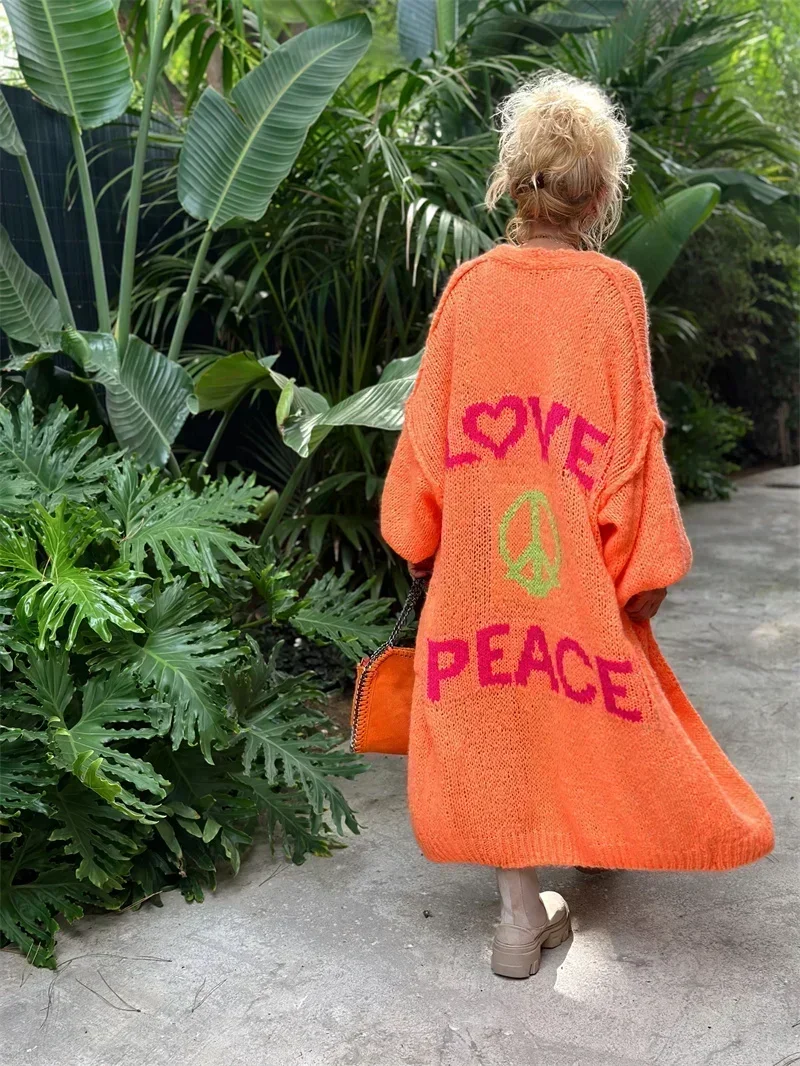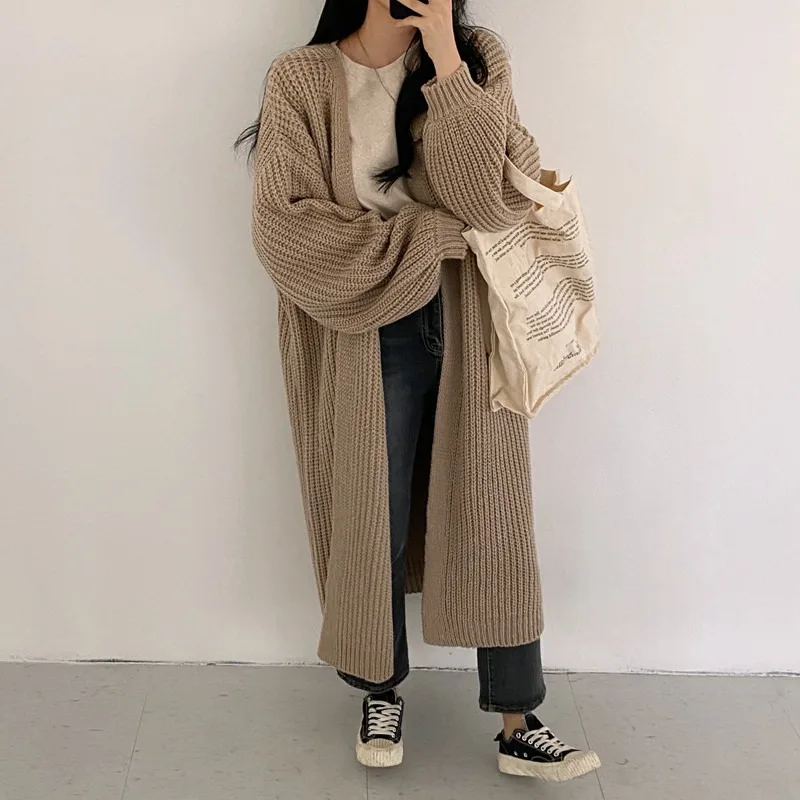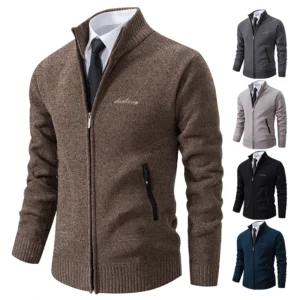The Timeless Allure of Organic Cashmere: Luxury with a Conscience
Organic cashmere represents the perfect harmony between indulgent luxury and conscious consumerism. This exquisite fiber, known for its unparalleled softness and warmth, has evolved beyond mere opulence to embody responsible fashion choices. As consumers become increasingly aware of the environmental and ethical implications of their purchases, organic cashmere has emerged as a beacon of sustainable luxury in the premium textile market.
The demand for transparent and responsibly sourced cashmere continues to grow, with the ethical luxury market expanding at twice the rate of conventional luxury goods. This shift reflects a deeper consumer desire to align personal values with purchasing decisions, particularly when investing in high-quality garments designed to last for years.
Estate Cloth stands at the forefront of this movement, offering exceptional cashmere quality through their commitment to Grade A fibers measuring under 16 microns in thickness. This remarkable standard ensures that each piece not only feels incredible against the skin but also represents a conscientious choice for discerning consumers.
The benefits of choosing organic cashmere extend beyond personal satisfaction:
- Reduced environmental impact through sustainable grazing and processing practices
- Enhanced animal welfare standards that prioritize goat health and natural behaviors
- Support for traditional herding communities and transparent supply chains
- Elimination of harmful chemicals and dyes throughout production
This guide will help you navigate the world of authentic organic cashmere options, understand crucial certification standards like GOTS (Global Organic Textile Standard) and GCS (Good Cashmere Standard), and make informed decisions about styling tips for cashmere cardigans that maximize your investment in these exceptional garments.
Understanding True Organic Cashmere: Beyond the Label
When exploring organic cashmere options, it’s essential to understand what “organic” truly means in this context. Unlike plant-based fibers where organic certification has clear parameters, animal-derived fibers like cashmere follow a more complex certification process that encompasses multiple aspects of production.
True organic cashmere must meet stringent requirements across the entire production chain:
Animal husbandry: Cashmere goats must be raised in conditions that allow natural behaviors, with access to organic feed and pasture free from synthetic pesticides, herbicides, and fertilizers. Preventative antibiotics and hormones are prohibited.
Land management: The grazing lands must follow organic principles, avoiding synthetic chemicals for at least three years prior to certification.
Processing standards: The fiber processing, from washing to spinning and dyeing, must use approved organic methods, avoiding harmful chemicals and prioritizing water conservation and waste management.
Traceability: Complete documentation must connect every step from the farm to the finished garment.
This comprehensive approach stands in stark contrast to conventional cashmere production, which often prioritizes quantity over quality and may involve intensive grazing practices that contribute to grassland degradation, particularly in regions like Mongolia and China where most cashmere originates.
It’s important to note the distinction between “natural” and “organic” cashmere. While all cashmere is technically natural (coming from goats rather than synthetic sources), only cashmere that meets specific certification standards can be labeled as organic. This distinction explains why truly certified organic cashmere is relatively rare and commands premium prices.
The challenges in attaining 100% organic certification for cashmere are significant. The nomadic traditions of many cashmere herders, the vast grazing territories involved, and the complexity of monitoring dispersed herds all contribute to these challenges. These factors explain why many brands focus on responsible cashmere production methods rather than full organic certification.
For consumers seeking quality cashmere garments, Estate Cloth’s cashmere sweaters collection represents a commitment to exceptional fiber quality and responsible production practices, prioritizing sustainability without compromising on luxury.
Essential Certifications: Verifying Authentic Organic Cashmere
A. Global Organic Textile Standard (GOTS)
The Global Organic Textile Standard stands as the most comprehensive certification for organic textiles, including animal fibers like cashmere:
- Requires that at least 95% of fibers come from certified organic sources
- Mandates animal welfare standards including natural feeding, appropriate shelter, and humane treatment
- Prohibits mulesing and enforces ethical shearing or combing practices
- Traces the entire supply chain from farm to finished product
- Restricts use of toxic chemicals in processing and manufacturing
- Ensures fair labor practices throughout production
Authentic GOTS certification can be verified through the product’s tracking number on the official GOTS database. Look for the distinctive logo featuring the word “organic” with a green checkmark, accompanied by the certification body’s name and license number.
B. Good Cashmere Standard (GCS)
While not specifically an organic certification, the Good Cashmere Standard complements organic practices with its focus on:
- Animal welfare protocols that protect cashmere goats from harm
- Training programs for herders to implement sustainable practices
- Community development initiatives that support herder livelihoods
- Environmental requirements to prevent overgrazing and land degradation
GCS certification involves regular farm visits and assessments by independent auditors who verify compliance through the entire supply chain.
C. Other Relevant Certifications
Additional certifications provide further assurance of responsible cashmere production:
- OEKO-TEX Standard 100: Verifies that the final product is free from harmful substances, making it safe for human use and addressing potential skin sensitivities.
- Textile Exchange RDS/RWS: While primarily focused on down and wool, these Responsible Standards are increasingly being adapted for cashmere production to ensure animal welfare.
- Cradle to Cradle: Evaluates products for environmental and social performance across five categories: material health, material reuse, renewable energy, water stewardship, and social fairness.
Understanding the geographic origin of cashmere is also crucial to assessing its quality and sustainability credentials. The specific climate conditions and herding practices in different regions produce varying fiber characteristics, with premium cashmere’s geographic origins playing a significant role in determining quality and environmental impact.
These certifications collectively create a framework for verifying claims about organic and sustainable cashmere, though consumers should remain aware that only a small percentage of global cashmere production currently meets these stringent standards.

The Superior Benefits of Certified Organic Cashmere
A. Enhanced Animal Welfare Standards
Organic cashmere production prioritizes the wellbeing of the cashmere goats through practices that honor their natural behaviors:
- Free-range grazing in natural habitats rather than confined feeding operations
- Access to organic feed without synthetic additives or GMO ingredients
- Prohibition of routine preventative antibiotics and growth hormones
- Gentle harvesting through combing during natural molting seasons rather than forced shearing
- Protection from extreme weather conditions with appropriate shelter
These standards result in healthier animals experiencing significantly less stress, which directly translates to superior fiber quality.
B. Environmental Sustainability
The environmental benefits of organic cashmere production create meaningful ecological advantages:
- Elimination of synthetic pesticides, herbicides, and fertilizers on grazing lands
- Implementation of rotational grazing practices that prevent overgrazing and desertification
- Preservation of biodiversity in fragile grassland ecosystems
- Reduced water pollution from chemical processing
- Lower carbon footprint through natural processing methods and reduced chemical manufacturing
These practices help preserve the delicate grassland ecosystems where cashmere goats traditionally graze, maintaining environmental balance for future generations.
C. Human Health Considerations
Organic cashmere offers significant benefits for both wearers and producers:
- Absence of residual chemicals that can irritate sensitive skin
- Hypoallergenic properties ideal for those with textile sensitivities
- Elimination of toxic exposure for workers throughout the production process
- Improved air quality in manufacturing facilities
- Protection of local water sources from chemical contamination
These health considerations make organic cashmere particularly valuable for individuals with skin sensitivities or environmental allergies.
D. Superior Fiber Quality and Longevity
The connection between organic practices and fiber excellence creates an investment-worthy garment:
- Healthier animals produce finer, stronger, and more consistent fibers
- Gentle processing preserves the natural structure and integrity of the fibers
- Absence of harsh chemicals maintains the fiber’s natural elasticity and softness
- Greater durability leads to extended garment lifespan
- Better resilience against pilling and wear with proper care
This superior quality makes organic cashmere a wise investment, particularly for timeless pieces like cashmere turtlenecks that can remain in your wardrobe for decades rather than seasons.
The Organic Cashmere Supply Chain: From Goat to Garment
The journey of organic cashmere from its origins to your wardrobe involves a fascinating process that honors traditional practices while embracing sustainable innovations.
In the remote highlands of Inner Mongolia, Tibet, and neighboring regions, nomadic herders tend their flocks of cashmere goats according to traditions passed down through generations. These goats develop their extraordinary undercoat as protection against harsh winter temperatures, sometimes reaching -40°F. Unlike conventional operations, organic producers limit herd sizes to prevent overgrazing and preserve fragile grassland ecosystems.
When spring arrives, the goats naturally begin to shed their winter undercoat. Organic producers harvest this precious fiber through careful hand-combing rather than shearing. This traditional combing process, typically occurring between March and May, takes longer but causes less stress to the animals and yields cleaner, longer fibers with fewer breakages.
After collection, the raw cashmere undergoes initial cleaning to remove coarse guard hairs and debris. In organic processing, this cleaning uses biodegradable soaps rather than harsh chemicals. The sorted fibers then move to spinning facilities where they’re transformed into yarn without the synthetic additives common in conventional processing.
The dyeing process represents another crucial difference in organic production. Traditional chemical dyes are replaced with natural plant-based alternatives or low-impact synthetic dyes that meet strict ecological criteria. This results in a safer product for both workers and wearers, though sometimes with a more subtle color palette.
Finally, the yarn is knitted or woven into garments in facilities that maintain organic certification through fair labor practices and continued chemical-free processing. Each step in this journey is documented and verified, creating unparalleled supply chain transparency.
Understanding this journey helps consumers appreciate both the craftsmanship and ethical considerations behind quality cashmere pieces. When styling your investment pieces, consider exploring versatile cashmere cardigan styling options that maximize the value of these carefully created garments.
For those who appreciate generous proportions and relaxed silhouettes, Estate Cloth’s oversized cashmere sweaters offer exceptional comfort while maintaining the highest standards of fiber quality and ethical production.
How to Identify Authentic Organic Cashmere Products
Navigating the world of organic cashmere requires a discerning eye to distinguish genuine products from misleading marketing claims. Use this practical guide to verify the authenticity of organic cashmere offerings:
Verify certification claims: Legitimate organic cashmere should display specific certification information, including license numbers that can be verified through certification databases. Look for GOTS, GCS, or other recognized certifications mentioned earlier.
Examine labeling details: Authentic certification labels include the certifying body’s name, license number, and clear identification of organic content percentage. Vague terms like “natural,” “eco-friendly,” or “green” without specific certification details should raise suspicion.
Assess fiber quality indicators: Premium cashmere, particularly organic varieties, should feel incredibly soft but not slippery. The fiber should have a slight luster rather than a shiny appearance, which often indicates synthetic blending or silicone treatments.
Check for transparency in origin: Reputable brands willingly share information about their cashmere’s origin, the specific herding communities they work with, and their processing facilities. Reluctance to provide this information is a red flag.
Understand realistic pricing: True organic cashmere represents a significant investment. Prices substantially below market average likely indicate either non-organic materials, lower-grade fibers, or potential false claims. Quality Grade A organic cashmere garments typically start at several hundred dollars.
Evaluate brand documentation: Look for detailed information about animal welfare practices, land management approaches, and processing methods. The best brands provide visual documentation of their supply chain.
Conduct physical assessment tests: When possible, examine the garment closely:
– Gently stretch the fabric—premium cashmere should return to shape quickly
– Rub the surface lightly—excessive shedding immediately suggests poor quality
– Check seams and finishing—quality organic cashmere deserves quality constructionBeware of greenwashing tactics: Be skeptical of brands that prominently feature nature imagery and eco-friendly language but provide little specific information about their certification or supply chain practices.
By applying these verification techniques, you can confidently identify authentic organic cashmere and make purchasing decisions aligned with both quality expectations and ethical values.

Premium Organic Cashmere Brand Showcase
A. Estate Cloth: Premium Grade A Cashmere Collection
Estate Cloth stands at the forefront of premium cashmere offerings with their exceptional commitment to quality and sustainability:
Their collection features only Grade A cashmere fibers measuring under 16 microns in thickness and exceeding 36mm in length—specifications that place their offerings among the finest available globally.
Every garment undergoes a rigorous 12-point quality control process, ensuring consistent excellence in construction, fit, and finish. This includes specialized testing for pilling resistance and colorfastness, addressing common concerns about cashmere longevity.
Estate Cloth’s design philosophy emphasizes timeless versatility rather than fleeting trends, creating pieces that remain relevant season after season. Their inclusive sizing approach ensures that this exceptional quality is accessible to diverse body types.
The brand’s sustainable practices extend beyond material sourcing to include longevity-focused construction methods that dramatically extend garment lifespan, reducing the environmental impact through fewer replacement purchases.
B. Additional Verified Organic Cashmere Brands
The organic cashmere landscape includes several other noteworthy brands with varying approaches to certification and sustainability:
Premium Tier:
* Naadam: Focuses on direct trade with Mongolian herders, emphasizing animal welfare and herder compensation while maintaining GOTS certification for select products.
* Loro Piana: Offers a certified organic cashmere line with exceptional quality control and preservation of traditional Italian craftsmanship.
* Johnstons of Elgin: Combines Scottish heritage with sustainable practices and transparent supply chain documentation.
Mid-Range Options:
* Cuyana: Provides minimalist designs with traceable cashmere and transparent pricing structures.
* Everlane: Offers Grade A cashmere with a focus on factory transparency and ethical production.
* Reformation: Emphasizes recycled and responsibly sourced cashmere with modern styling.
Each brand maintains different certification standards, with some focusing on GOTS certification while others prioritize animal welfare certifications or transparency initiatives. When considering styling options for your cashmere investments, exploring 15 stylish ways to wear cashmere cardigans can help maximize versatility.
For women seeking specifically designed options with exceptional quality and fit, Estate Cloth’s women’s cashmere turtlenecks offer tailored luxury with the same commitment to fiber excellence and ethical production.
Organic Cashmere by Product Type: Finding Your Perfect Piece
A. Essential Organic Cashmere Sweaters
The foundation of any luxury cashmere collection begins with well-crafted sweaters that offer versatility and timeless appeal:
Crewneck Styles: The quintessential sweater silhouette offers unmatched versatility, easily transitioning from casual to formal settings. Look for ribbed details at cuffs and hem for improved structure and longevity.
Turtleneck Designs: Offering both sophistication and practical warmth, turtlenecks in organic cashmere provide exceptional insulation without bulk. Their elegant silhouette pairs beautifully with everything from tailored pants to casual denim.
V-Neck Options: The slightly more formal V-neckline creates a flattering frame for both men and women, easily layered over collared shirts or worn alone for a refined casual look.
Weight considerations significantly impact a sweater’s versatility and comfort. Lightweight cashmere (1-2 ply) works beautifully for layering and transitional seasons, while medium weights (3-4 ply) offer ideal everyday warmth. Heavyweight options (5+ ply) provide exceptional insulation for colder climates.
When selecting sizing, allow approximately 1-2 inches of ease for proper drape without excessive bulk. Estate Cloth’s attention to inclusive sizing ensures options for diverse body types without compromising the garment’s elegant lines.
B. Luxurious Organic Cashmere Accessories
Accessories offer an accessible entry point into organic cashmere luxury:
Scarves and Wraps: Available in various weights and dimensions, these versatile pieces can transform simple outfits while providing remarkable warmth. Classic neutrals offer maximum versatility, while carefully selected colors can become signature accessories.
Hats and Gloves: Direct skin contact makes organic certification particularly valuable for these items, eliminating concerns about chemical sensitivity. Look for reinforced construction at wear points for extended longevity.
Socks and Home Accessories: Often overlooked, cashmere socks provide extraordinary comfort for everyday luxury. Similarly, small home items like eye masks or travel pillows offer practical indulgence with minimal investment.
These accessories make exceptional gifts, combining luxury with practicality and ethical production values.
C. Organic Cashmere Home & Loungewear
Extending organic cashmere beyond traditional outerwear creates opportunities for everyday luxury:
Throw Blankets: The ultimate home luxury item, organic cashmere throws provide exceptional warmth with minimal weight. Look for double-ply construction for improved durability in daily use.
Loungewear Sets: Pants, shorts, and robes in lightweight organic cashmere create unparalleled comfort for relaxation or sleep. The temperature-regulating properties make these items suitable year-round.
Bed Accessories: Pillowcases and eye masks in organic cashmere offer gentle contact for sensitive skin during sleep, with natural hypoallergenic properties.
For those seeking versatile everyday luxury, Estate Cloth’s cashmere cardigans combine exceptional fiber quality with adaptable styling potential for year-round use.
Cashmere Wrap Sweaters, Women's Cashmere Pullovers
$75.89 Select options This product has multiple variants. The options may be chosen on the product pageCashmere Cable Knit Sweaters, Women's Cashmere Pullovers
Price range: $111.82 through $112.93 Select options This product has multiple variants. The options may be chosen on the product pageCropped Cashmere Sweaters, Women's Cashmere Pullovers
$155.77 Select options This product has multiple variants. The options may be chosen on the product page- Price range: $102.02 through $109.37 Select options This product has multiple variants. The options may be chosen on the product page
Oversized Cashmere Sweaters, Plus Size Cashmere Sweaters, Women's V-Neck Cashmere Sweaters
$136.87 Select options This product has multiple variants. The options may be chosen on the product page- Price range: $108.11 through $130.03 Select options This product has multiple variants. The options may be chosen on the product page
Caring for Organic Cashmere: Maximizing Longevity
Proper care dramatically extends the lifespan of organic cashmere investments, preserving their luxurious qualities for years or even decades:
Washing Guidelines:
1. Hand-wash using lukewarm water (around 85°F/30°C) with a specialized wool/cashmere detergent or mild baby shampoo.
2. Gently swirl the garment without rubbing, stretching, or wringing.
3. Limit washing to 2-3 times per season; spot clean between washes when possible.
4. If machine washing is necessary, use a dedicated wool cycle with cold water and place the garment in a mesh bag.
Drying Techniques:
1. Press (don’t wring) excess water from the garment between clean towels.
2. Lay flat on a fresh, dry towel away from direct heat and sunlight.
3. Reshape the garment while damp, gently easing it back to original dimensions.
4. Allow 24-48 hours for complete drying, depending on thickness.
Storage Solutions:
1. Clean garments thoroughly before seasonal storage to prevent moth damage.
2. Fold rather than hang to prevent stretching and distortion.
3. Store in breathable cotton bags or acid-free tissue paper.
4. Add cedar blocks or lavender sachets as natural moth repellents (refresh every 3-4 months).
5. Store in cool, dry locations away from direct sunlight.
Managing Pilling:
1. Minor pilling is natural, especially in high-friction areas.
2. Remove pills using a specialized cashmere comb or high-quality fabric shaver.
3. Comb with gentle, directional strokes rather than harsh scrubbing motions.
4. Prevent excessive pilling by reducing friction against rough surfaces and bags.
Understanding the true value proposition of quality cashmere helps justify these care efforts. Many consumers find that cashmere cardigans are worth the investment when considering their exceptional longevity, comfort, and timeless appeal.
With proper care, premium organic cashmere maintains its extraordinary softness and appearance through hundreds of wears, making it one of the most sustainable luxury choices available.

Alternative Ethical Fiber Options: Beyond Organic Cashmere
While organic cashmere represents an exceptional ethical luxury choice, several alternatives offer similar benefits with different environmental and ethical profiles:
Recycled Cashmere:
Produced from post-consumer cashmere garments, recycled cashmere significantly reduces environmental impact by eliminating the need for new fiber production. The reclamation process involves sorting by color to minimize re-dyeing, then carefully breaking down and respinning the fibers. While recycled cashmere may have slightly shorter fibers than virgin options, resulting in marginally less softness, the environmental benefits are substantial—reducing water usage by up to 80% and eliminating the land impact of grazing.
Organic Merino Wool:
This fine wool offers excellent temperature regulation with slightly more durability than cashmere. Certified organic merino comes from sheep raised on organic pasture without mulesing (a controversial practice), creating a cruelty-free alternative with similar ethical credentials to organic cashmere but at a more accessible price point.
Alpaca Fiber:
With hollow fibers that provide exceptional warmth with less weight, alpaca offers excellent insulation properties. The animals have a lower environmental impact than cashmere goats, with soft pads that don’t damage grazing lands and more efficient digestion requiring less food intake. Responsible alpaca sourcing focuses on fair treatment of both animals and the indigenous communities that traditionally raise them.
Innovative Plant-Based Alternatives:
Recent textile innovations have created plant-based options with surprisingly luxurious properties:
* Organic cotton-cashmere blends: Reduce the amount of cashmere needed while maintaining softness
* Tencel™ and Modal: Wood-derived fibers with silky textures and excellent drape
* QMilch: An innovative biodegradable fiber made from milk protein that offers exceptional softness
| Fiber Type | Warmth (1-10) | Softness (1-10) | Durability (1-10) | Environmental Impact | Price Range |
|---|---|---|---|---|---|
| Organic Cashmere | 9 | 10 | 7 | Moderate | $$$$ |
| Recycled Cashmere | 8 | 9 | 6 | Low | $$$ |
| Organic Merino | 8 | 8 | 9 | Moderate-Low | $$ |
| Alpaca | 9 | 8 | 8 | Low | $$$ |
| Tencel™/Modal | 6 | 8 | 8 | Low | $$ |
These alternatives provide options for different priorities and budgets while maintaining a commitment to ethical production values.
Is Organic Cashmere Worth the Investment?
Q: How do I justify the higher cost of organic cashmere?
A: The value of organic cashmere becomes clear through cost-per-wear analysis. A quality organic cashmere sweater priced at $300 that lasts for 10 years with weekly wear during appropriate seasons (roughly 30 wears per year) results in a cost of just $1 per wear. Compare this to a $50 synthetic sweater that needs replacement every season, and the economic advantage becomes evident alongside the superior comfort and ethical benefits.
Q: Does organic cashmere truly last longer than conventional options?
A: Yes, properly sourced organic cashmere typically outlasts conventional alternatives by years. The healthier animals produce stronger fibers, and the absence of harsh chemical processing preserves the fiber’s natural integrity. With appropriate care, premium organic cashmere can remain beautiful for 10+ years compared to 2-3 years for mass-produced conventional cashmere.
Q: Beyond durability, what other value does organic cashmere offer?
A: Organic cashmere provides substantial non-monetary value through ethical production that protects animal welfare, supports traditional herding communities, and reduces environmental impact. The superior comfort, temperature regulation, and hypoallergenic properties also create tangible quality-of-life benefits for wearers, particularly those with skin sensitivities.
Q: What’s the best entry point for organic cashmere if I’m on a budget?
A: Start with accessories like scarves or hats that require less cashmere while still providing the luxurious experience. Alternatively, consider classic sweater styles in neutral colors that maximize versatility and transcend seasonal trends, ensuring years of relevance in your wardrobe.
Where Can I Find Certified Organic Cashmere Online?
Finding authentic certified organic cashmere requires knowing where to look and how to verify claims. Several online shopping channels specialize in ethical luxury textiles:
Dedicated ethical luxury marketplaces like Rêve En Vert, Maison de Mode, and The Folklore curate selections of verified sustainable brands, often providing detailed information about certification standards and production practices. These platforms typically verify brand claims before listing products, adding an extra layer of assurance.
Certification databases also serve as valuable verification tools. The GOTS public database allows consumers to verify license numbers and certification status for brands claiming organic certification, while the Textile Exchange maintains similar resources for responsible wool and down standards increasingly being applied to cashmere.
When shopping from general retailers or brand websites, consider asking these specific questions to evaluate organic cashmere claims:
- What specific certification standards does your cashmere meet?
- Can you provide the certification license number for verification?
- Where is your cashmere sourced from, and what animal welfare standards are in place?
- What processing methods are used, particularly for cleaning and dyeing?
- How do you verify compliance throughout your supply chain?
Red flags that suggest potentially misleading claims include vague terminology like “natural” or “eco-friendly” without specific certifications, reluctance to provide detailed sourcing information, and prices significantly below market averages for certified organic cashmere.
The availability of verified organic cashmere continues to expand as consumer demand grows, making it increasingly possible to find options across various price points and styles. By applying the verification techniques outlined in this guide, you can confidently invest in authentic organic cashmere that aligns with both your aesthetic preferences and ethical values.







